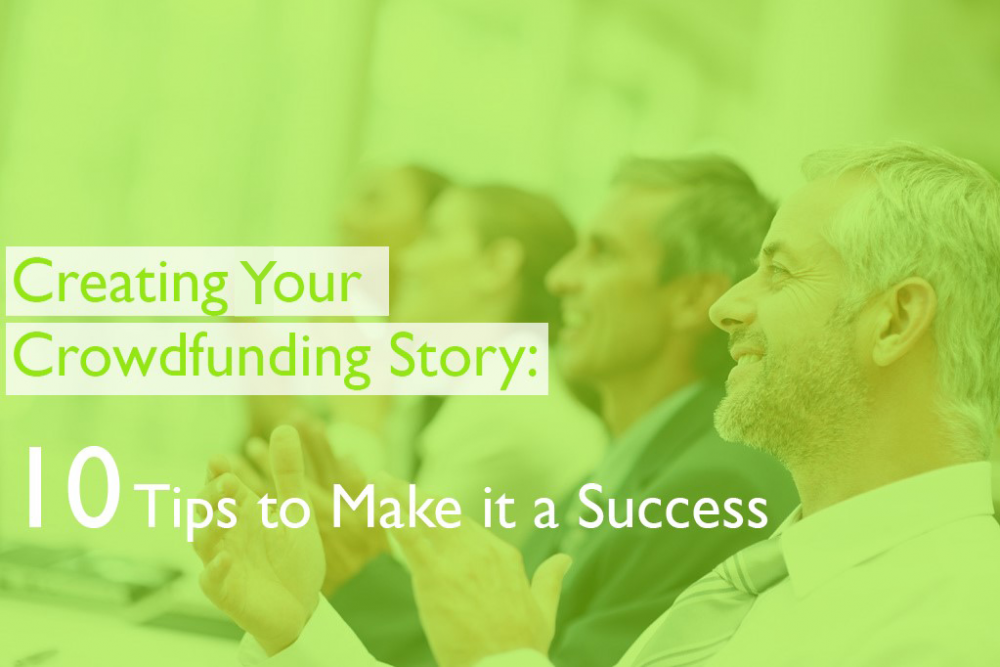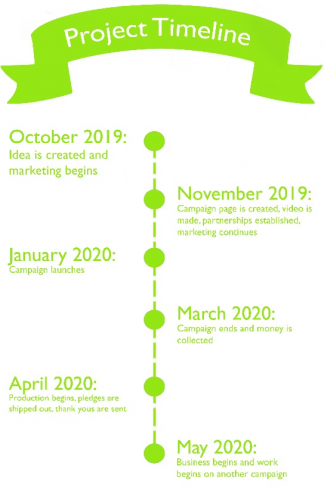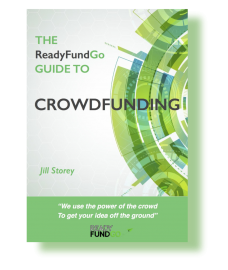
Crowdfunding Tips : 10 Tips for Creating Your Crowdfunding Campaign Story
Why don’t we start off with what those 10 nifty tips are so you know what to expect:
- Hit the key messages quickly
- Have clear objectives
- Your title matters
- Start simple
- Introduce the problem
- Display your solution
- Provide examples and evidence
- Delve into why you’re raising your funds
- Give your project a timeline
- End with a call to action
Let’s take these in order, shall we?
1. Hit the Key Messages Early
People don’t pay attention for very long anymore. With social media and ads getting us into the habit of never staring at anything for longer than a minute, maximum, our attention spans have been consistently decreasing.
Since you only have a short time to get your crowdfunding story to backers, you need to make sure to hit the important parts first. Make sure to include content that speaks to their passions and values, help them visualize the impact of their action, and illustrate what your project hopes to achieve. These are the things that will help the curious party commit to backing your project, so you need to make sure you get these points across early.
2. Have Clear Objectives
When you’re writing your story, give yourself clear objectives for its completion. Three key objectives to have are to keep it concise, compelling, and close it with a call to action. If you can nail these three objectives, you’ll be able to engage the potential backer all of the way through the story and give them a clear direction to go in if they are enthused by your project.
3. Your Title Matters
Spend time thinking about the title for your crowdfunding and the first line of your description. The title should be something that catches attention but isn’t convoluted. This will be the first thing people see of your campaign, so you want to drag them in, but you also want them to know what they’re looking at. As such, the title should include what the product literally is. The description is where you go into the product’s primary feature. This is the second thing people will see of your campaign, before they even click to open your page. This should be short, so it’s not grueling to read, but contain enough information to enable the reader to understand at least 60% of what your campaign is about.
4. Start Simple
Have you ever heard of the acronym K.I.S.S.? It means “Keep it Simple Stupid,” now I’m not calling anyone stupid, but I must say that it’s such a popular acronym for a reason. More often than not, people don’t want to have to unwind convoluted stories. This is especially true when that story is trying to get them to buy something. So, start your story off simply. Tell them who you, and your team, are. Give them your introduction and your relationship with the campaign. This should include your credibility woven into the basics of when you started your company and the WHY you started the company and devised this idea or product.
In this same vein, as well as your story being simple your page should be kept simple too. Avoid large blocks of text and add plenty of white space by shortening paragraphs. 400-600 words should be enough, and ensure every word has a purpose. Another way of creating an engaging crowdfunding page is by adding high quality images. These break up the text and convey ideas that may be hard to put into words.
5. Introduce the Problem
After people know who you are, see you are credible and understand your passions and your motivations, it’s your task to get them engrossed in your mission as well. This is where you introduce the problem, or conflict, your idea solves. A story without conflict doesn’t hold any interest. Imagine Harry Potter without the conflict. No one wants to read a book about a pubescent teenager going through middle and high school. It’s the conflict that drags people in.
This is your chance to show people the scale, and seriousness of the problem you’re trying to solve. Give the reader background and statistics to validate your claims. People often respond to consequences rather than benefits. For example, someone is more likely to work harder if you tell them they’ll get fired for slacking off rather than they may get a bonus for working harder. Use this to your advantage. Tell the reader what the impact is if a solution to your problem isn’t found.

6. Display your solution
Once you’ve got people interested and invested in the conflict, it’s time to propose your solution. That solution is your idea, or product. Tell them what you’re wanting to achieve and why your solution is not only unique, but why it’s the best way to solve the problem. Don’t be afraid to put facts and data in here as well to show people you know what you’re talking about and that your idea really IS the best solution.
7. Provide examples and evidence
After you’ve got your solution out there, it’s time to finish dragging the reader through the use of ethos and pathos. Ethos relies on establishing credibility of the speaker. Really solidify your credibility here by using data from 3rdparties that support what you’ve said earlier in your story. Appealing to the reader’s pathos is focused on their emotions. Give testimonials, examples, and reviews from people who have been impacted by the problem and by those who have been helped by your idea.
8. Delve into why you’re raising your funds
Now that you’ve gotten people engrossed in your story, it’s time to help them trust you. People don’t want to just give money away if they’re worried it will go to improper use. As such, you need to explain how you’ll use the funds that are raised, where they will go and what they’ll help fund.
Secondly, go into why you chose crowdfunding. There are other options out there, so why did you specifically choose to attempt this project via crowdfunding? Again, try to use this as an opportunity to drag them in. Make them feel included when you answer this question.
9. Give your project a timeline
Now that people know why they should support your campaign and are reassured that their money will go to good use, it’s time to give them the breakdown of WHEN you will deliver. Provide a timeline for your project covering each phase of your journey and when the rewards will be delivered. Give yourself some leaway and some flexibilty to cover unforeseeable circumstances.
If anything changes, update your timeline immediately so everyone knows – the worst thing you can do is to keep your supporters in the dark. The timeline can be delivered either in a written, or in a graphical format. The timeline helps to further add trust and credibility to your campaign.

10. End with a call to action
Finally finish your story with a call to action. Let your crowd know how they can help. Give them direction, tell them where they can pledge their support, create unusual perks to get them excited about helping out, and make sure to be specific in regard to what you want them to do (i.e. purchase your early bird special or share your page with family and friends).
Don’t delay start your crowdfunding story today https://readyfundgo.com/start/
This post was written by Aaron at ReadyFundGo.



